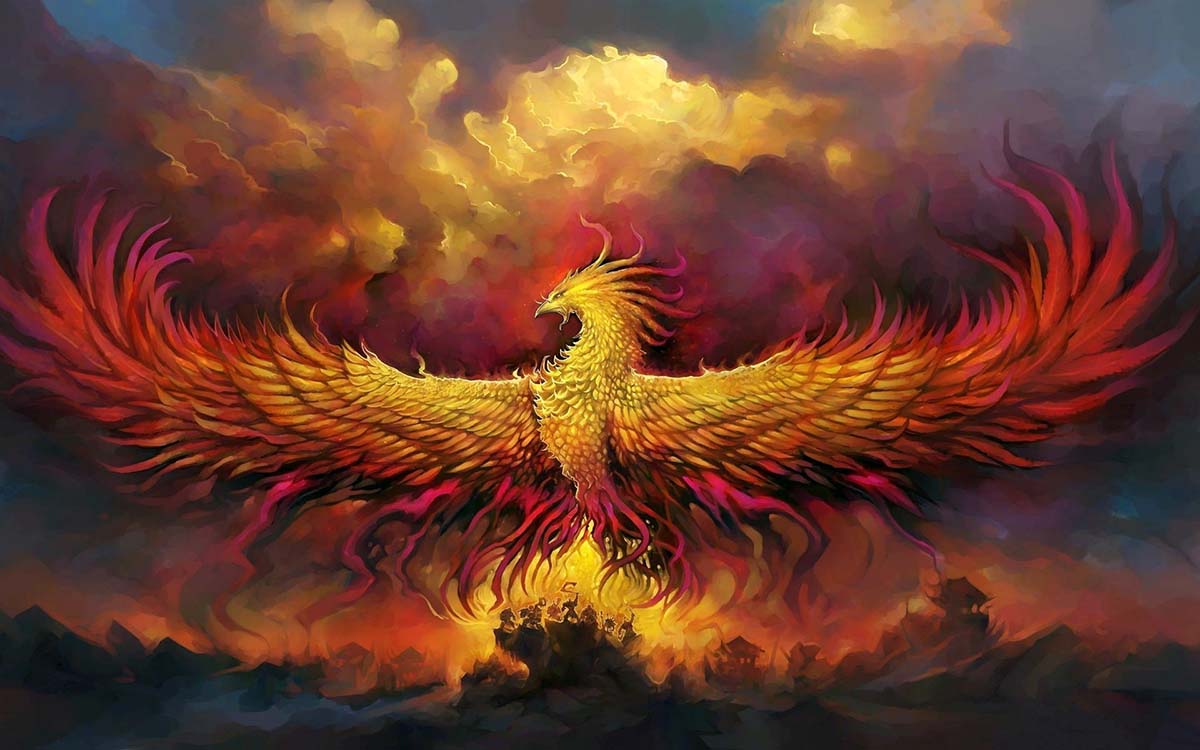The phoenix, or phœnix as it is sometimes spelled, has been an enduring mythological symbol for millennia and across vastly different cultures. Despite such varieties of societies and times, the phoenix is consistently characterized as a bird with brightly colored plumage, which, after a long life, dies in a fire of its own making only to rise again from the ashes. From religious and naturalistic symbolism in ancient Egypt, to a secular symbol for armies, communities, and even societies, as well as an often-used literary symbol, this mythical bird’s representation of death and rebirth seems to resonate with humankind’s aspirations.
Associated with the sun, a phoenix obtains new life by rising from the ashes of its predecessor. Some legends say it dies in a show of flames and combustion, others that it simply dies and decomposes before being born again.
The origin of the phoenix has been attributed to Ancient Egypt by Herodotus and later 19th-century scholars. Some scholars have claimed that the poem De ave phoenice may present the mythological phoenix motif as a symbol of Christ’s resurrection.
The earliest clear mention of the phoenix in ancient Greek literature occurs in a fragment of the Precepts of Chiron, attributed to 6th century BC Greek poet Hesiod. In the fragment, the wise centaur Chiron tells a young hero Achilles the following, describing the phoenix’s lifetime as 972 times the length of a long-lived human’s:
A chattering crow lives now nine generations of aged men,
but a stag’s life is four time a crow’s,
and a raven’s life makes three stags old,
while the phoenix outlives nine ravens,
but we, the rich-haired Nymphs
daughters of Zeus the aegis-holder,
outlive ten phoenixes.
